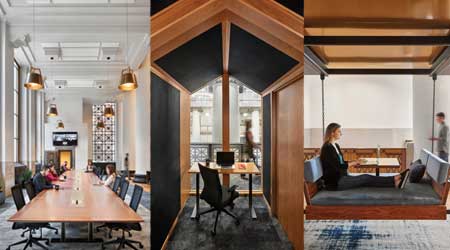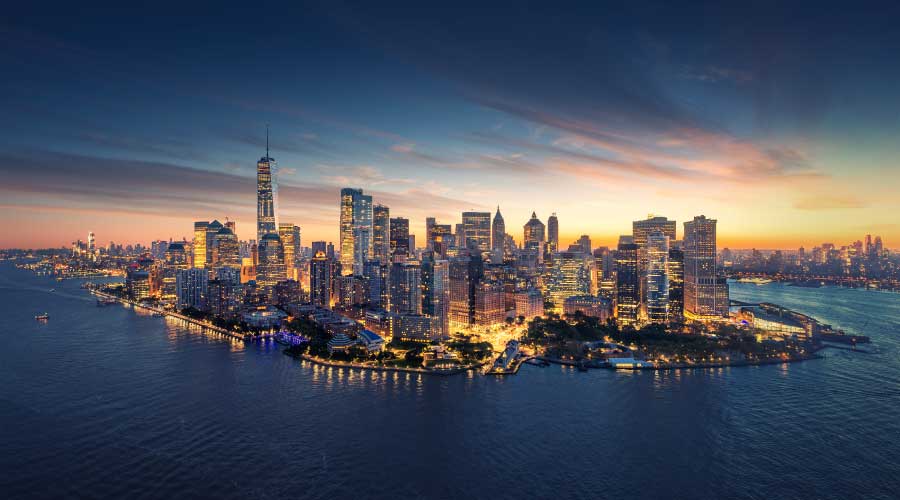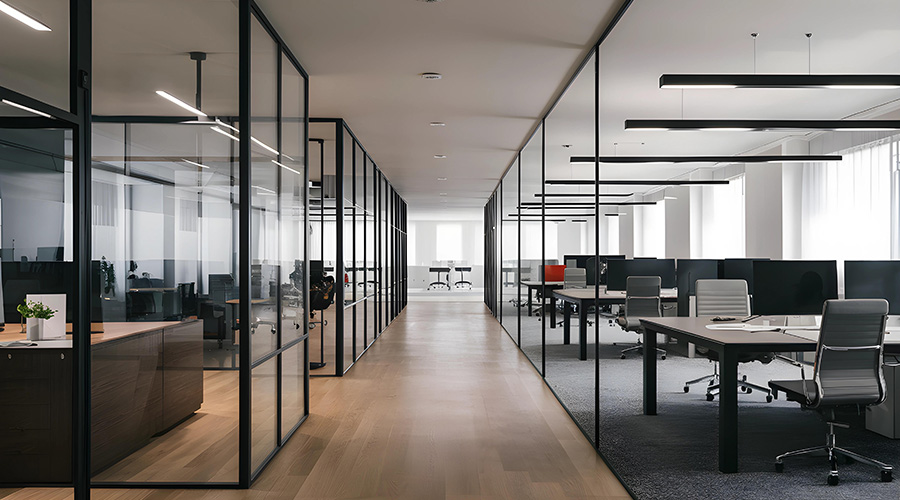 The flexible Expensify office in Portland, Ore., provides a range of open and private workspaces, including a hanging bed inspired by a wicker “beach bed” from an offshore strategic planning trip to Cambodia.Photos: Garrett Rowland
The flexible Expensify office in Portland, Ore., provides a range of open and private workspaces, including a hanging bed inspired by a wicker “beach bed” from an offshore strategic planning trip to Cambodia.Photos: Garrett RowlandReal-World Success Story: Implementing Flexibility in Workplace Design
A case study of tech company Expensify's new space shows the value of incorporating flexibility in workplace design.
Flexible design is possible even in the most unconventional of spaces. The Portland, Ore., office of tech company Expensify is an example of flexible design within the constraints of an existing structure — a downtown historic bank building. The challenge was to provide a flexible workplace within a four-story sky-lit atrium.
Before developing an approach to solve for the constraints of the existing bank building, it was important to understand the company's culture. Implementing a successful design is so much more than just meeting program requirements. It is about understanding how people work. While that is different in every organization, job shadowing, holding a design charrette, conducting a deep-dive workshop, or scheduling individual user interviews are some of the techniques to better understand company goals and culture.
Expensify's CEO, David Barrett, described the workforce this way: “We work on laptops. We need Wi-Fi. We sometimes like to sit together, but our staff can literally work anywhere in the world.” His goal: a space where people want to come to work.
Observations made by shadowing employees in their San Francisco office showed what the staff valued and how they worked. Eating areas were commonly used; employees liked to sit next to each other at tables, but they didn’t always collaborate in this setting; sales people were on the phone much of the day; power and Wi-Fi were paramount; and employees only sat in one spot for an average of 20 minutes. Most importantly, it was evident that variety and choice were directly tied to employee happiness.
Expensify employees enjoy their work and their colleagues. During the observation day, an impromptu music party broke out in their large conference room. It was clear that very distinct types of spaces were going to be needed. Moreover, it was apparent that this relatively young population didn’t want a playground. They were more sophisticated than that. They wanted a workplace that was respectful and flexible so they could complete any of their variety of tasks and not disturb their neighbors.
The design aesthetic was informed by the tech company’s culture. The company’s motto of “Get S#!t Done” extends well beyond the embroidered couch pillow with these same words — it reflects the importance placed on work-life balance that has emerged as one of the most important drivers for a high percentage of the working population.
“We want people to come to work, be as creative, efficient, and productive as possible for eight or nine hours, and then leave the office and enjoy their lives,” explains Alexandra Revelli, a company director. The best way to find that efficiency and productivity is to design a space in which anyone can thrive.
Many design elements of the Portland office come from the organization’s own sense of who they are. As a company, they embark on annual offshoring trips for strategic planning. While abroad, they work hard, play hard, and they create memories and build relationships with each other. Because this time is spent together, their employee community is built on shared life experiences. The hanging bed used in the office was inspired by a wicker “beach bed” from their trip to Cambodia, and some of their art is photos of major landmarks they visited together.
Alan Gerencer is an architect and interior design principal in ZGF Architect’s Portland Office.
Related Topics:














